The nice weather has already set in and it's time to think about the wood that sits outside, i.e. pergolas, fences, planters, garden furniture. It needs to be protected from the summer sun, rain, wind, insects, mildew and all the other aggressions to which it will be subjected.
Although it was born outside, after it is cut and processed, wood must be protected because otherwise the weather and the sun will change its natural colour, insects will attack it, so will blue mould, and all this will hasten its ageing and destruction. Not all wood species are equally affected by environmental factors. The more tannic species resist better outdoors because they have their natural impregnation to protect them. This is the case for exotic teak, but also for acacia our very good outdoor resistance.
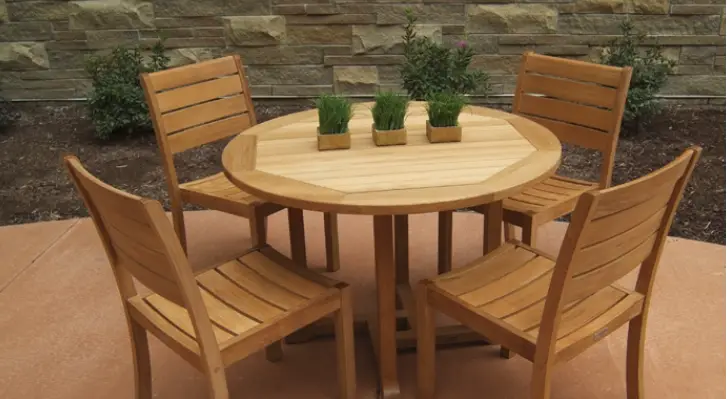
Wood that has already been treated with impregnants can be used for the exterior. These are industrial treatments that consist of impregnating wood under pressure in autoclaves with chemicals that make it resistant to insects and mould, but also resistant to rot (wood in the ground). This wood is sometimes green or bluish green in colour because of the chemicals it has been treated with. It is used for important buildings, telegraph poles, load-bearing structures, but can also be used for ordinary work (exterior flooring). It is more expensive than untreated wood, but stronger. It can be stained and finished without problems.
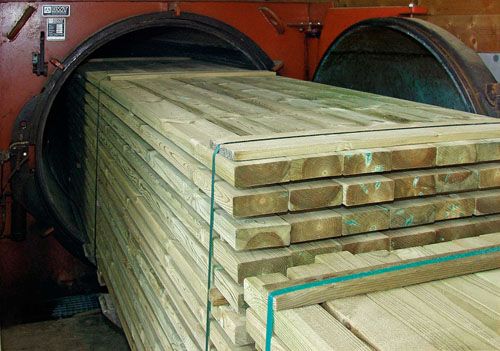
However, untreated wood is often preferred for exterior work, and is protected after the work is done. Use coloured impregnations and exterior resistant varnishes, lacquers, wax impregnations, or exterior resistant paints. It should be noted that wood used for exterior applications does not have the same moisture content as wood used for interior applications (8-12%). For exterior applications, wood with a higher moisture content is used, up to 16-18% (depending on the moisture content of the area).
Staining wood that stands outside should be done with stains that are resistant to the outside. Ordinary stains do not withstand UV radiation and are destroyed over time. If it is in direct sunlight it fades in less than 1 year. The use of coloured impregnants guarantees colour fastness over time.
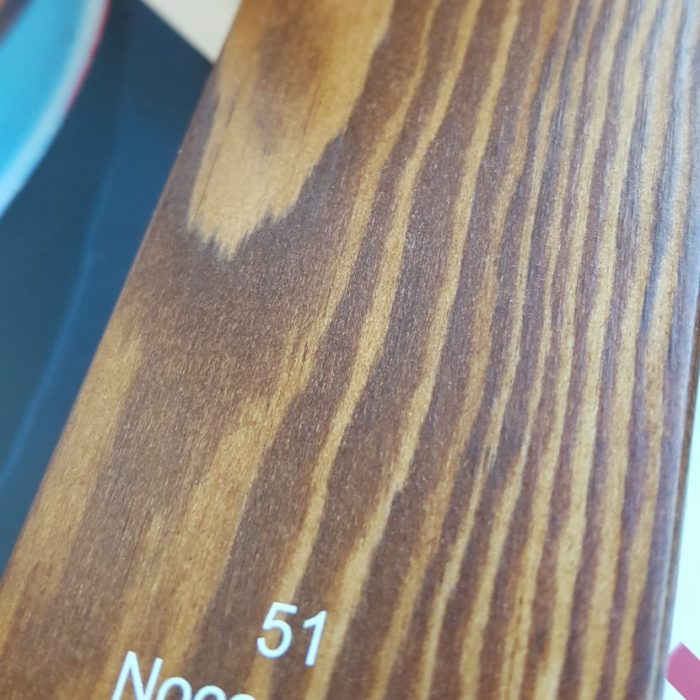
Moisture and weather protection is done with filming materials. It's best not to scrimp and use those made specifically for outdoor use. These varnishes should be elastic, not crack when the wood varies in size depending on the humidity outside.
Matt lacquers are more durable than glossy ones. However, very matt varnishes (under 10-15 gloss) are not recommended because they have a high amount of matting agent which makes them more porous and there is a risk of water penetrating underneath. Also, slightly coloured (honey) varnishes are much more resistant than totally colourless ones.
There are situations when the wood, although outside, is not directly exposed to the sun and weather, as is the case with arrowwood, or when its protection does not have to be quite like that of furniture (fences, pergolas, for example). In this case, waxed lacquers or impregnants are used. Lacquers are basically varnish and impregnant in one. As they are coloured products, care must be taken during application to avoid unevenness. Applying too much in one place and too little in another will result in colour differences.
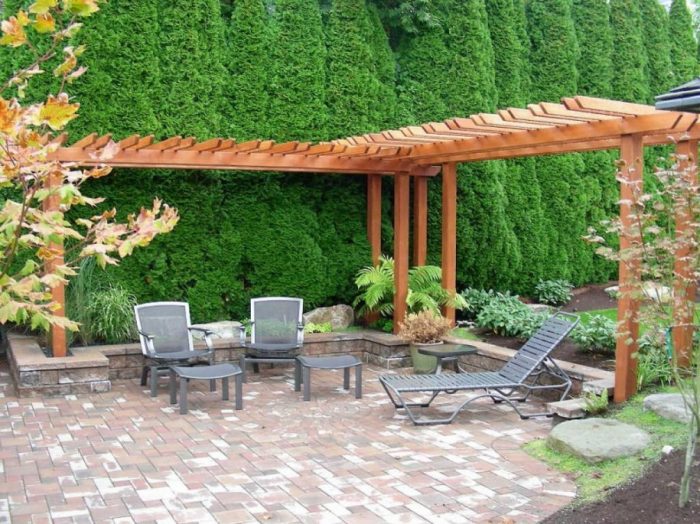
To tell you the truth I consider wax impregnations the best and easiest to use material for filmless finishes. They are formulated with exterior resistant dyes and waxes. For a wood that sits continuously under direct weathering the lack of film is a good thing. Large dimensional variations can lead to cracking of the film and then there is no protection. The wax prevents water from entering the wood, but also lets it move freely.
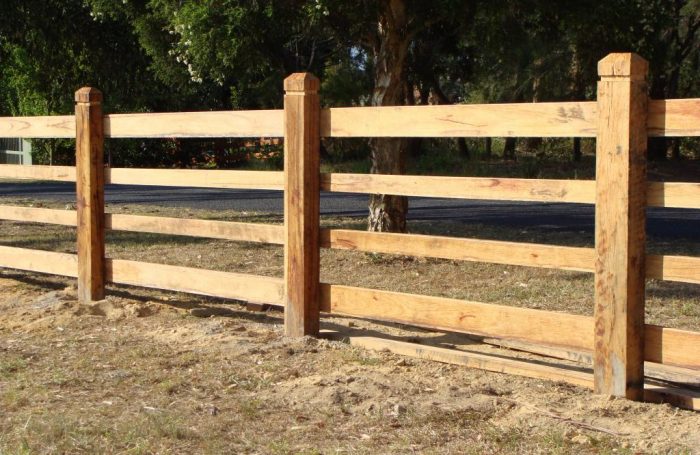
In conclusion, if you want to refinish garden furniture, outdoor tables, benches, but also doors and windows, impregnate the wood first and after drying apply 1-2 coats of exterior varnish. If you want to protect your fence, pergola or want more rustic furniture, use wax impregnation. Lacquer can be considered a form of protection with impregnant and varnish, where the varnish layer is thinner.
Exterior finishing products are simple to use, can be applied with a brush or trowel and most importantly, they are water-based. All the more reason to consider if you're thinking of protecting your garden furniture or fence. You'll be very pleased with the result and you'll also be doing a relaxing activity. So, get to work!
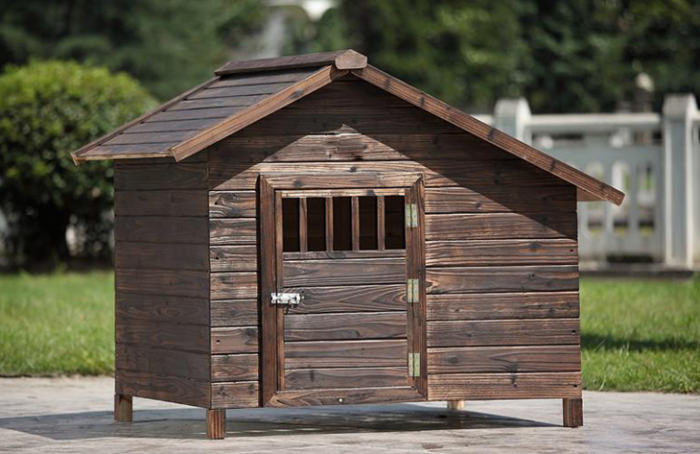
























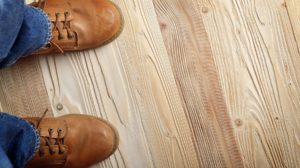
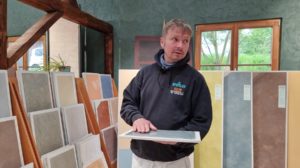
Isn't linseed oil a suitable solution for protecting wooden furniture that sits outside?
Hello,
Linseed oil was used for protection in the past. Now it is no longer an alternative because it has no resistance to UV radiation, and unless solvents are added (not bleached) such as white spirit or other petroleum derivatives, it dries very slowly (sometimes for weeks). It is not recommended for floors (decks) because it has no abrasion resistance.
All the best!
Hello!Please help me with an answer!I built the foundation of the fence and now we have to install the wood that I bought 2 months ago at the market and I left it to dry out of the sun.Can you please tell me what to give it to resist I want it to be colored.What to give it: primer, varnish or waxed impregnants?Thank you!
Hello,
In my opinion the best solution for fences is waxed impregnation. It protects and doesn't film, so if the wood varies dimensionally with the humidity in the atmosphere it doesn't crack or peel. The disadvantage is that the finish has to be refreshed, depending on how much rain has washed it, every 1-2 years. The varnish can last longer, but if cracking occurs, it needs to be cleaned completely because otherwise it continues to flake. With waxed impregnation, it is sufficient to add another coat on top of the old one.
All the best!
Hello, I built a cottage on oak pillars that I knocked into the ground 3 m. I did not protect the wood with anything. What can I use to protect it.
Hello!
Oak is a hard-wearing wood and will not rot soon. The problem is precisely on the surface, where the wood is exposed to air and water that accumulates. You need to make sure that the water drains away, not puddles. Either lay the soil on a gentle slope, or put sand and stone at the bottom.
For sun and weather exposed pillars I recommend oil-based coloured lacquers. The ones with tung oil give a very good resistance to weathering. The pigments in the coloured varnish (not paint, which completely covers the wood) give resistance to UV radiation.
All the best!
Hello,
Three years ago, I used unburnt engine oil to protect a wooden porch and burnt engine oil to protect a wooden fence (a large area). I saw that you recommend using waxed impregnant. Is this a good solution in this case too (previous use of engine oil)? If not, can you recommend another type of product? I mention that I want to get a colour as close as possible to that of natural wood, on the porch; on the fence it is not possible, I would just like it not to turn black. THANK YOU VERY MUCH!
Hello!
I generally recommend waxed impregnations and oil-based coloured coatings because they do not form a film that will flake off over time when water from weathering enters through cracks in the film. They are good protections, but need to be maintained every 2-4 years, depending on their quality.
In 3 years it is assumed that the oil with which you have protected the wood has already been washed off by the rain so you can use waxed impregnants for both the porch and the fence. If you want to get rid of the blackness caused by burnt engine oil, you should sand the wood. Under the tar layer you will find clean wood.
To protect wood, you need a product that provides two types of protection - weather protection and UV protection. Oil and wax are very good for protection against water. To resist UV radiation they need to be coloured, even if they are transparent. The pigments inside outdoor products are the ones that get in the way of UV radiation. Therefore, outdoor products are not totally transparent and colourless. The higher the amount of pigment inside, the better the protection, so paints (which totally cover the wood) are more resistant than lacquers (coloured but transparent). That's why, in order to resist over time, you should find a lacquer for the wood of the porch in a colour close to that of the wood (pine, douglas fir, light chestnut). If you leave its natural colour - protected only with linseed oil - without any other stain, the wood will turn yellow very quickly, then turn grey.
Below are 2 links that may be helpful.
All the best!
https://revistadinlemn.ro/2018/06/25/8-cele-mai-frecvente-intrebari-despre-protejarea-lemnului-la-exterior/
https://revistadinlemn.ro/2018/08/03/12-reguli-simple-pentru-a-avea-constructii-din-lemn-rezistente-la-exterior/
Hello,
Thank you very much for your detailed and professional answer.
Have a nice day!
Respectfully,
Paula Spatarelu Iancu